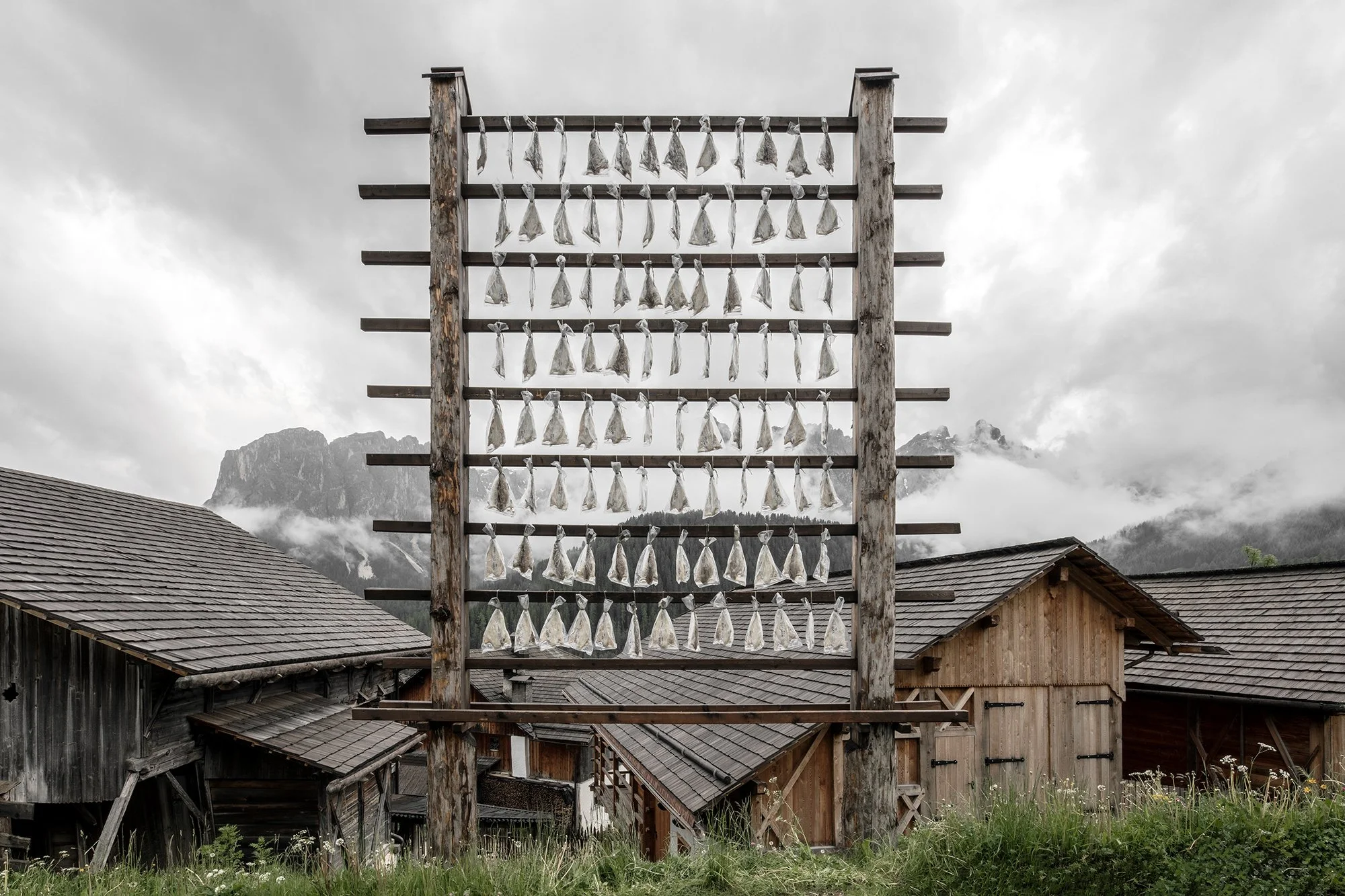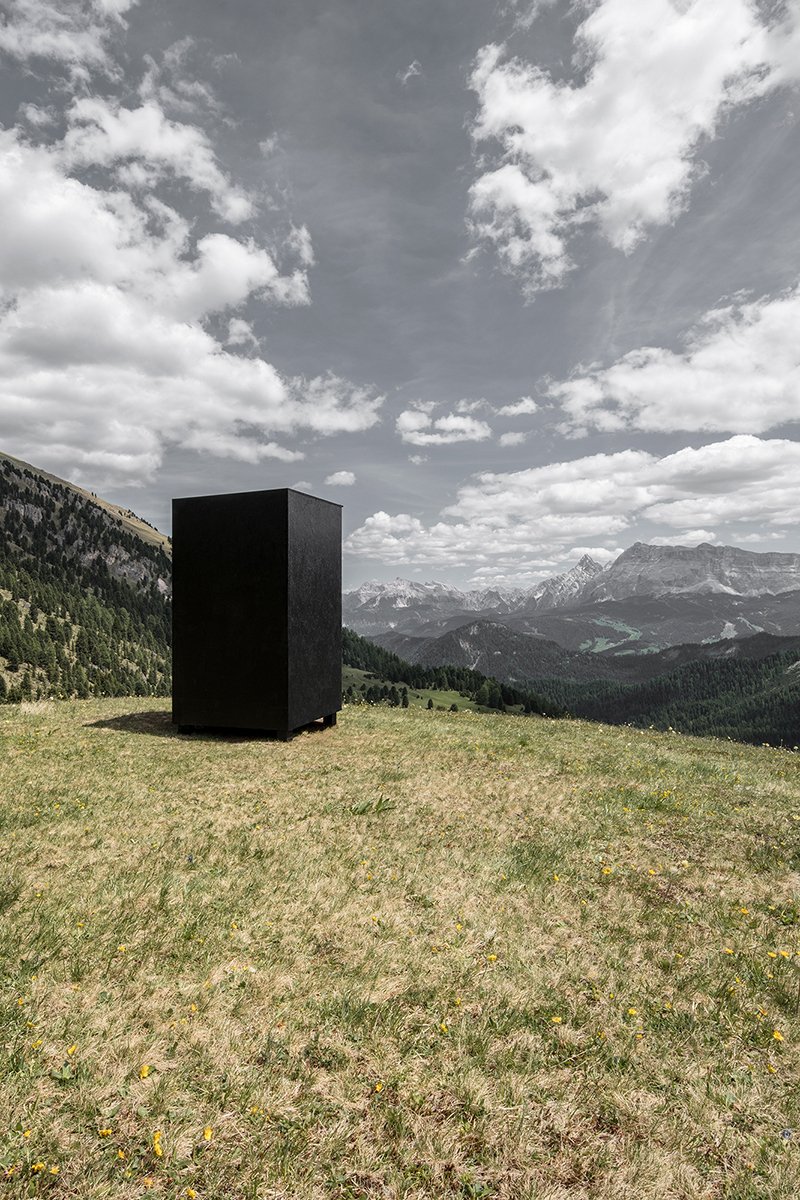Pesce fuor d’acqua
Luca Roncoroni
To fasten its installation, Luca Roncoroni uses a "favá", a traditional wooden rack which in the past was used for drying broad beans (“faus” in ladin, hence the etymology). Instead of legumes, the artist hangs stock fish. His biography is the intersection of two cultures; Ladin, the local culture, but also Norwegian, as the Italian emigrant has lived in Norway for years. With its installation, he attempts to create a connection between the two realities, though, quoting the words of the artist, he “remains a fish out of water”.
Exhibit place Les Viles
On the banks of the River Seres, set among the hamlets of Seres and Miscì, a number of old country mills have been restored and brought back to life. Once upon a time, they were vital to the work of the farmsteads and for preparing essential foods. However today the mills stand as testimony to a peasant culture that belongs to the past and to the country folk's resourcefulness and ability to survive. There are also various farmhouses that have stood the test of time well in the typical rural Ladin settlements, known as "Viles". The tourists visiting the Longiarü "Viles" in summer and autumn are pleasantly impressed, also by the wonderful view on the surroundigs. The itinerary also takes to the Lagoscel and Plans “Viles”. The Vila da Plans is to spot in a solitary and quiet place at 1350m.










